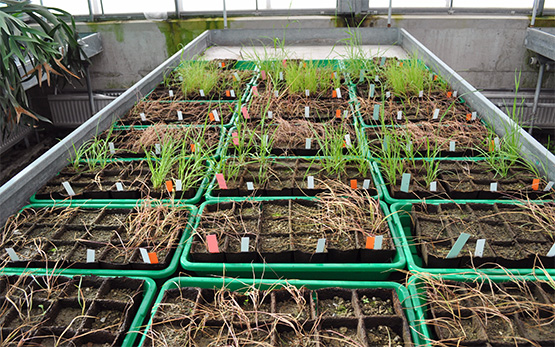Conducted in the greenhouse, resistance tests check for cases of herbicide resistance in a weed population from the field. This is a standard testing method used internationally.
For the test, a certain number of individuals from the weed population with suspected resistance are grown in the greenhouse, then treated at several dosage levels at the appropriate stage with the herbicide under investigation. After a few weeks, the weed survival rate is evaluated. The populations undergoing testing are compared with both susceptible and resistant control groups. The results are then categorised according to the weed’s susceptibility to the herbicide. We consider a population to be resistant if at least 50% of the treated plants survive treatment at the approved dose of the herbicide.
The greenhouse tests are supplemented by molecular tests to determine whether it is a case of target-site resistance (TSR) or non-target-site resistance (NTSR), i.e. whether there are mutations in the gene coding for the target protein of the herbicide.






